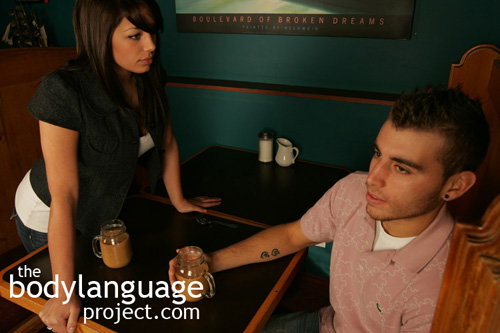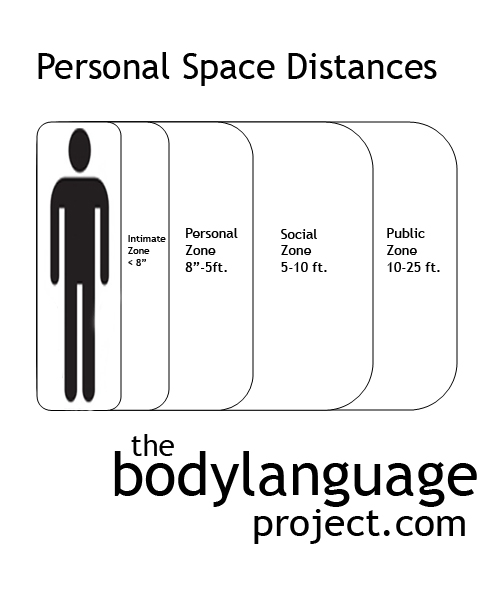There are some very simple ways in which people indicate that they are being invaded, and they are important should one want to avoid offending them. As we have learned in this chapter, personal space is important to all people and so we want to be cautious not to intrude on others for two reasons: first, for the sake of the comfort of the people around us, and second, for our own sake, so that people don’t attach negative ideas to us.
Strangers should be given the most amount of space until we get to know them so we should avoid breaking the five foot separation mark unless invited to do so. While it might seem rude to keep a new acquaintance at a distance and five feet might even seem like a huge distance, it’s a clearly defined ritual and a benchmark that most people find commonplace. For those that use touch to display connectivity (the touchy-feely ones) should show reservation at least until proper rapport is built and your acquaintance shows relaxed and open signals. Handshakes are common across most culture and are acceptable greeting method when meeting new people. The kiss-hello and other more intimate methods to greet find their place in many cultures, but the handshake is becoming more and more popular across the globe, so it’s a fairly safe bet it will be well received. After the handshake is complete, on should take a step back or to the side to converse. Next, you should allow the other person to define their preferred zone in which to carry on the remainder of the interaction. This is done by allowing them to move forward or backward if they desire. Eventually you will find a happy medium between you and them, so do avoid continuously approaching or leaning forward, in other words, plant your feet and keep an upright body.
Your partner will signal that you are encroaching on them and making them feel uncomfortable by taking a step backwards. If this isn’t possible due to space restrictions, or while in tight quarters such as an elevator, or if continuously followed by advancements, your partner will begin to pull their heads backwards and away. Even when space is not limited, we may find that polite people that don’t wish to overtly show that they are being infringed upon may also simply pull their heads back versus stepping backwards. If you find that you are constantly moving forward, then it’s likely because your comfort distance is less than the comfort distance of others.
Others might just show a bigger smile (possibly showing stress) and simply pretend that nothing is bothering them, but as soon as eye contact is broken or when their speaking partner is distracted, will take a step back. Others still, can pull their arms up and out to reserve space or can use their hand on the sleeve of the other to keep them from advancing. Arm crossing also demonstrates a negative posture and is used to shield the body so this can also indicate encroachment. Respecting other people’s intimate zones is extremely important. Invading people’s space can cause anxiety, irritation, anger or fear. If all else fails, you know you’ve exceeded the general personal space of others when your eyes begin to fuzz or cross, or you feel the uncomfortable sensation of warm breath on your face. When all else fails, take a step back and let them close the gap.




